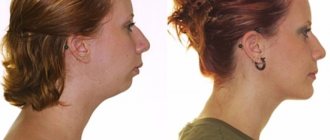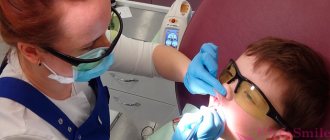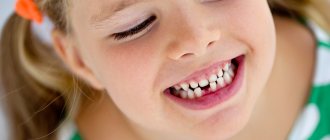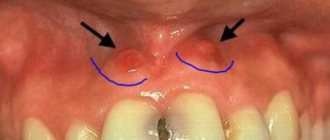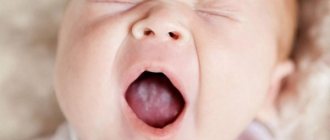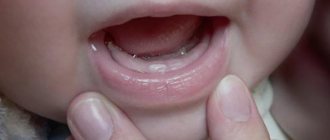Doctors Cost
Price list Doctors clinic
Children under one year of age are also susceptible to various diseases. A runny nose and cough are some of the most common. A cough in a child under one year old can be a symptom of ARVI, but the virus is far from the only reason for the appearance of this protective mechanism. A runny nose is also a response to the invasion of pathogens and other factors. And if every child has a cough reflex, then the baby cannot blow his nose to free the nasal cavity from mucus. It is important to promptly receive medical help and recommendations for treating a runny nose and cough in a newborn.
Cough during teething
Coughing during teething is not a common symptom. The nature of its manifestation allows us to determine whether it is a consequence of the disease, or whether it is caused precisely by the process of formation of new teeth.
A wet cough during the development of the first teeth in children, caused by excessive salivation, usually disappears after 2-3 days and eliminates the need for any special treatment. Examine the skin around the baby's mouth - it usually appears irritated due to expectorated saliva, which indicates the natural origin of the symptom (the expectoration reflex) during teething.
If there is a frequent cough and runny nose, as well as shortness of breath and wheezing that persists for more than 2 days, then it is necessary to invite a doctor to examine the child, since these symptoms may indicate a disease.
Also, children may experience a dry cough at this time. Most often it occurs after a child has been crying for a long time due to prolonged nasal congestion.
Weakened immunity
The eruption of the first milk teeth is associated with great stress for the body, and local immunity is greatly weakened even despite the active production of saliva. That is why, against the background of teeth growth, a child so often “grabs” various viruses, which leads to the development of ARVI. In this case, cough and snot no longer occur during teething, but during the development of viral diseases. Or, as we used to call all respiratory pathologies, for colds.
“My first child and I, while we were wondering whether the cough could be due to teething, ended up in the hospital because... received ENT complications. We read all sorts of information that this situation was supposedly normal, so they launched it, everyone thought it was too much trouble. True, after discharge the tooth did come out, but it looks like we had two troubles at once. So, it is better to go to the doctor immediately if your child coughs. With the second one, I won’t even think about it.”
Olga, from correspondence on baby.ru
Weakened immunity during teething can cause a cough.
But how can you distinguish between normal and pathological? Where is a serious disease that requires treatment and observation by a doctor, and where are the symptoms associated solely with teething? Let's look into this issue further.
How to treat
First of all, during a severe cough, it is necessary to eliminate the pain from teething. To do this, the baby should be offered to chew a chilled teether or massage the gums. If the pain does not disappear, then it is advisable to use medications in the form of gel, ointment, syrup or rectal suppositories.
Online consultation with a doctor of the highest category : “...can teething be accompanied by a cough?”
To prevent the baby from being tormented by a night cough while teeth are growing, it is recommended to regularly rinse the nose with a special bactericidal solution from the pharmacy, a self-made product based on salt or medicinal plants. This will prevent drying out and accumulation of mucus. In addition, as prescribed by a doctor, various drops/sprays can be used to moisturize the nasal sinuses: “Aquamaris”, “Salin” and others.
Due to the fact that a runny nose and cough can be a consequence of an infectious disease or acute respiratory infection, Dr. Komarovsky recommends that after the formation of baby teeth begins, ask your pediatrician what immunostimulating drugs can be given to children during this period in order to increase the body’s protective functions.
When wondering how to treat a cough during the appearance of molars, you should also remember about simple folk methods. For example, you can achieve natural flow of phlegm and saliva along the wall of the larynx without drugs or rinses by lifting the child’s head when he is lying in the crib. In addition, it is recommended to regularly offer your baby his favorite drinks and ventilate the room - these measures will reduce the likelihood of inflammation and prevent the mucus from drying out.
How to distinguish a runny nose of an infectious nature from snot on teeth
Most mothers complain that it is impossible to understand what causes nasal congestion in their baby. In fact, determining why a baby has snot on his teeth is not so difficult.
Normal Teething Symptoms
- The baby's gums swell and become red. If you lift your lips, you can see that the crown of the tooth is already in the gum and is about to break through it;
- excessive salivation;
- refusal to eat, poor appetite;
- the child constantly chews everything that comes to hand;
- the baby looks overexcited, distracted and tired. He sleeps poorly and is often capricious;
- body temperature can either rise or fall, or constantly remain within subfebrile levels;
- the baby develops clear snot;
- Loose stools may occur - up to 4 times a day.
All these signs disappear and the child’s condition returns to normal as soon as the tooth breaks through the gums. Usually the condition improves immediately after a piece of the dental crown is cut through.
The appearance of a new tooth against the background of ARVI
- elevated temperature up to 38.5C;
- profuse runny nose - the snot is initially transparent, then white or yellow;
- red throat and inflamed tonsils;
- dry cough (usual coughing is normal with a runny nose, we are talking about a deep cough);
- general lethargy and weakness;
- tearfulness.
These are signs of a typical respiratory infection, which often occurs due to a decrease in the baby's immune system during the period of the appearance of a new tooth.
Main differences
I don’t want to stuff my baby with medications one more time. Therefore, one can understand the desire of parents to understand when a runny nose on the teeth is normal, and when it is a manifestation of an illness. You can distinguish snot on your teeth from a cold by the signs given in the table below.
| Snot on teeth of non-infectious nature | Runny nose during teething due to ARVI |
| All symptoms occur suddenly and together, rather than one after another. The baby immediately develops a fever, a runny nose and other signs. | The malaise appears gradually. The first two days there is a fever and redness of the throat, then a runny nose begins. |
| The child’s throat is not red, the tonsils are not enlarged. | Obvious hyperemia of the larynx, enlarged and inflamed tonsils. |
| The snot is transparent, thin, like water. There is not a lot of mucus, and there is almost no swelling of the nose. | As the disease progresses, the snot becomes white or yellow and thick. It is difficult for the baby to breathe through his nose due to severe swelling. |
| The baby may cough slightly as mucus drains into the larynx. As a rule, this does not cause any complications, and the cough disappears along with the snot. | At the beginning of the disease, the child may have a dry, barking cough. After a profuse runny nose appears, it becomes deep and hoarse. |
| A runny nose can last for two weeks, and it will end exactly when the crown of the tooth appears on the gums. | Thick snot disappears in 7-10 days. Then they can be replaced by transparent ones, which will stop bothering you as soon as the tooth comes out. |
Sometimes the symptoms of the disease overlap with the natural signs of teething, so you should contact your pediatrician in any case!
Ways to alleviate the condition
Coughing in infants is a natural reaction of the body to the appearance of incisors, but it can and should be dealt with. To avoid the development of a symptom, you need to eliminate its main cause - increased salivation and runny nose during teething. To do this, you need to do 2 things: regularly moisturize the nasal cavity and eliminate accumulated mucus. To prevent the formation of mucus, you can place a small pillow under the child's head (this will prevent mucus from flowing down the nasopharynx).
You can moisten your baby's nose with homemade saline solution or Aquamaris. Doctors (pediatricians) recommend using nasal drops with sea water, which relieve swelling and irritation.
Fangs appear at a conscious age, when a child can blow his nose on his own. Responsibility for removing snot from babies lies with their parents. To clear the nasal passages in children when teething appears, you can use a nasal aspirator or syringe. You need to proceed as follows:
- Prepare a saline solution, a decoction of sage or chamomile.
- Take the baby so that he is standing or in a reclining state.
- Turn the child's head to the side, drop 3-5 drops of a pre-prepared solution or decoction into the nostril.
- Insert the tip of the aspirator into the nostril, and pinch the second nasal passage with your finger. Suck out the mucus.
- Repeat the procedure for the other nostril.
- Wash, disinfect and dry the device.
Before using any aspirator, you should read the instructions for its use. During the procedure, you need to ensure that the baby does not worry and that the aspirator tip does not touch the walls of the nose. Failure to comply with this requirement may result in damage to the mucous membrane and the development of bleeding.
Parents who do not know how to use the device or are afraid of injuring their baby should contact their pediatrician or nurse. The specialist will conduct the first procedure and show how to properly remove mucus
At the same time, attention should be focused on the actions of the physician. If necessary, the procedure can be recorded on the phone
Another way to improve your child’s well-being is to buy teethers at a pharmacy or baby store. They affect the teeth and gums, develop fine motor skills of the hands, promote the formation of a correct bite and prepare for the process of chewing food. There are also battery-powered models and finger teethers with small brushes. Cooling options with water or gel deserve special attention. Before use, they are placed in the refrigerator for 20-60 minutes.
Recommendations for choosing and using a teether:
- The product must be safe for the baby. It is worth choosing products from trusted manufacturers made from high-quality hypoallergenic materials.
- The teether must be appropriate for the child’s age and abilities. It’s good if the product arouses interest in the baby and fits easily in the hand and mouth.
- Products must be disinfected regularly to avoid the accumulation of harmful germs and infection.
